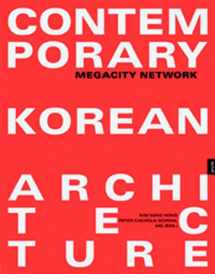
Contemporary Korean Architecture: Megacity Network
Book details
Summary
Description
A megacity is a metropolitan area with a population of 10 million or more people--some definitions also include density in the equation, requiring more than 2,000 people per square kilometer. Seoul, Korea, more than qualifies: with 10.3 million people living in an area smaller than New York City, it is one of the densest urban areas on the planet. This creates tremendous pressure on architects, who must figure out how to make the most of every square inch; often they build vertically, but is that the only answer? Contemporary Korean Architecture challenges architectural stereotypes and promotes innovation with 32 projects from the last 10 years by 16 representative Korean architects. By creating hybrids of conventional architectural typologies, these projects--which range from traditional timber-structure houses to corporate headquarters and sports arenas--meet the demands of Seoul's eclectic urban landscape in their own unique ways. Essays on Korea's urban and architectural histories complete the book, making it not only an important overview but the first to examine the means by which Korean architects are tackling one of the most difficult problems in the field.


We would LOVE it if you could help us and other readers by reviewing the book
Book review



